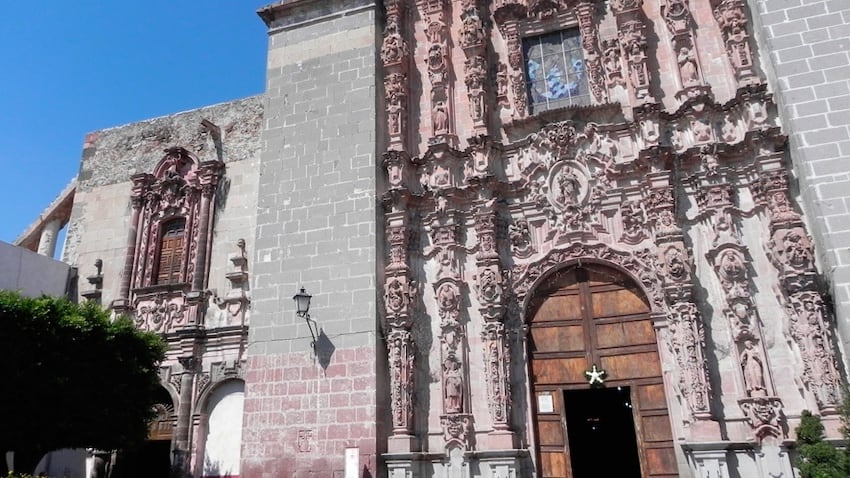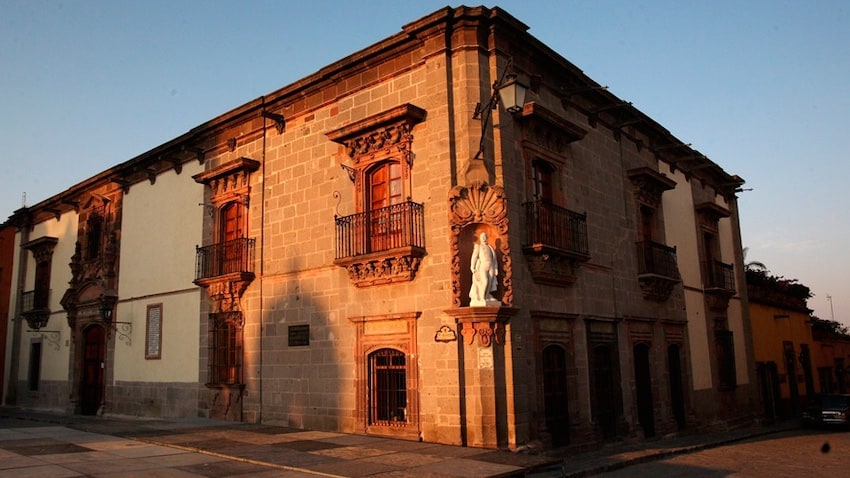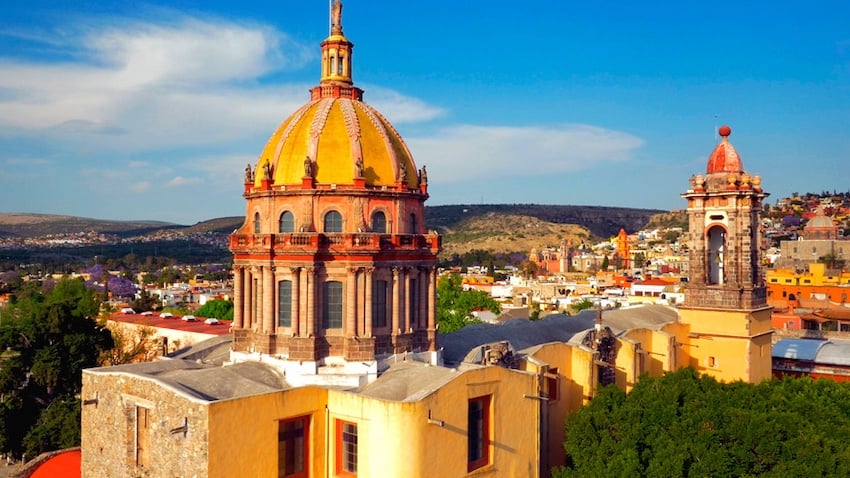What buildings make San Miguel de Allende the best small city?

San Miguel de Allende — the five time winner of the world’s “Best Small City” award by Condé Nast Traveler and a UNESCO World Heritage Site— has a rich history dating back to its founding in 1542 atop the indigenous Chichimeca village of Itzcuinapan. Franciscan friar Fray Juan de San Miguel named the settlement San Miguel el Grande, in honor of the Archangel Michael.
In the 16th century, the discovery of silver in Guanajuato, San Luis Potosí, and Zacatecas elevated San Miguel el Grande’s importance as a vital link between these prosperous mining regions and Mexico City, the capital of what was then New Spain. The town flourished economically and by the 18th century, it had become one of New Spain’s wealthiest settlements, creating much of the impressive architecture that can still be seen today.
Ignacio Allende, a great hero of the War of Independence, was born in 1769 to wealthy Spanish parents in San Miguel el Grande. Originally a Captain in the Spanish Army, he later sought to challenge the oppressive rule of the Spanish crown. Joining priest Miguel Hidalgo y Costilla, they called the people to revolt on the 16th of September, 1810. He was eventually captured in 1811, and accused of high treason to the Spanish crown. He was executed and his head was hung on display in nearby Guanajuato.
In 1826, the town was elevated to city status and changed its name to San Miguel de Allende in honor of its native hero. In 2008, the city’s historic center was designated a UNESCO World Heritage Site for its remarkable religious and civic structures in the Mexican Baroque style.
La Parroquia de San Miguel Arcángel
The original parish was built in a modest Baroque style in 1709. This changed significantly in 1880 when the Bishop commissioned Zeferino Gutiérrez to create a new façade. Despite being a self-taught architect, Gutiérrez drew inspiration from postcards of medieval European cathedrals. The resulting neo-Gothic masterpiece, characterized by its towering spires made from locally sourced pink quarry stone, are visible from almost anywhere in the city and have made this iconic landmark one of the most famous churches in Mexico.
Templo de San Francisco de Asís

Its construction began in 1778 and took over 20 years to complete, during which time architectural styles were changing. The facade features intricate Churrigueresque design with carved stone figures, while the bell tower added in 1799 showcases Neoclassical elements. Considered a prime example of 18th-century Baroque architecture in Mexico, the church’s ornate exterior and beautiful interior attract tourists and worshippers alike. It is an active place of worship, hosting celebrations like the feast day of Saint Francis of Assisi on October 4, honoring the patron saint of animals and the environment.
Museo Histórico Casa de Allende

Ignacio Allende’s former residence is now a museum that provides a comprehensive view of the hero’s life and the War of Independence. Through original artifacts, it showcases the history of San Miguel el Grande, spanning the 16th to 18th centuries. Recreating the living spaces of the Allende family, the museum offers a vivid portrayal of daily life for prosperous Creole residents of the era. Detailed accounts of Ignacio Allende’s background, family ties, pivotal role in the fight for independence, ideological differences with Miguel Hidalgo, and subsequent capture, trial, and execution further enhance visitors’ understanding of this tumultuous period in Mexican history.
Domingo Narciso de Allende, Ignacio’s father, commissioned the construction of the house in 1769 as a gift for his wife, María Ana Unzaga. Seized by the viceregal government during the War of Independence, the house was eventually returned to the Allende family after the conflict’s conclusion. The mansion was acquired by the government of Guanajuato in 1976 and later entrusted to the National Institute of Anthropology and History (INAH) to open as a museum in 1990.
Casa del Mayorazgo de la Canal

Built in the late 18th century as a home for the De la Canal family, this mansion is one of the most opulent buildings in the city. Don Narciso María Loreto de la Canal, a colonel in the Spanish army, supported the liberation cause and gathered over sixty Creole conspirators at his house to plan their fight against Spanish domination. In return, royalist forces looted and nearly destroyed his mansion. The grand wooden gate survived the attack and is now famous for its intricately carved high reliefs displaying the family’s coat of arms. In 1981, Banco Nacional de Mexico purchased and restored this building and it is now open to the public as the Casa de Cultura Citibanamex museum.
Iglesia de la Inmaculada Concepción, Las Monjas

Upon the death of her parents, María Josefa Lina de la Canal confided in Father Luís Felipe Neri de Alfaro of her desire to become a nun. At only 15 years of age in 1751, he asked her to meditate at the sanctuary of Atotonilco to clarify her thoughts. After eight days, she reaffirmed not only her decision to become a nun, but her intention to establish a convent devoted to the Immaculate Conception, using the 70,000 pesos she had inherited.
Inaugurated in 1765, the Church of the Immaculate Conception is locally known as Las Monjas (The Nuns). Sor María Josefa financially and spiritually supported the project until her death in 1770. An elegant cupola was added by Zeferino Gutierrez in 1891, inspired by Les Invalides in Paris.
The heroes that continue to inspire the city and its UNESCO World Heritage Site status attract visitors from around the world. As visitors explore the landmarks which dot the city, they not only admire their architectural splendor but also pay homage to the enduring spirit of the people who have shaped this vibrant city. Each site tells a story of the pursuit of freedom and expression and safeguards the enduring legacy of San Miguel de Allende.
Sandra is a Mexican writer and translator based in San Miguel de Allende who specializes in mental health and humanitarian aid. She believes in the power of language to foster compassion and understanding across cultures. She can be reached at: [email protected]
Source: Mexico News Daily

